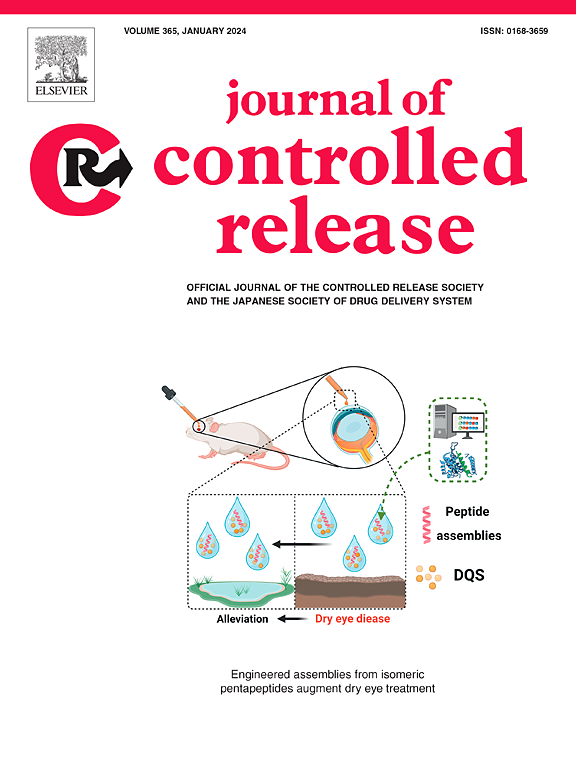Tough and waterproof microneedles overcome mucosal immunotolerance by modulating antigen release patterns
IF 10.5
1区 医学
Q1 CHEMISTRY, MULTIDISCIPLINARY
引用次数: 0
Abstract
Mucosal vaccines are considered an ideal choice for combating mucosal pathogens due to their ability to neutralize pathogens at the first line of defense. However, the development of mucosal subunit vaccines is constricted by rigorous challenges, such as low immunogenicity, poor antigen delivery efficiency, and mucosal tolerance. Here, a buccal microneedle patch incorporated with engineered nanoparticles loaded with urease B subunit (rUreB) was developed to overcome the above challenges. Specifically, an engineered nanocarrier was developed to protect the antigen and modulate its release profile. Then, the nanoparticles were enriched to form microneedle tips with superior mechanical and waterproof properties, allowing effective penetration of the buccal mucosa and resistance to salivary washout. Besides, the microneedles demonstrated an S-curve antigen release pattern which was crucial for the recruitment of antigen presenting cells (APCs) and the downregulation of mucosal tolerogenic DCs and Treg cells. The buccal microneedle vaccine without any immune stimulators induced potent systemic and mucosal immune responses, resulting in superior protection of mice from the oral challenge of Helicobacter pylori. These results suggested that the rationally designed buccal microneedle vaccine can effectively overcome mucosal delivery barriers and mucosal tolerance, providing a promising alternative strategy for mucosal vaccination of subunit antigens.


求助全文
约1分钟内获得全文
求助全文
来源期刊

Journal of Controlled Release
医学-化学综合
CiteScore
18.50
自引率
5.60%
发文量
700
审稿时长
39 days
期刊介绍:
The Journal of Controlled Release (JCR) proudly serves as the Official Journal of the Controlled Release Society and the Japan Society of Drug Delivery System.
Dedicated to the broad field of delivery science and technology, JCR publishes high-quality research articles covering drug delivery systems and all facets of formulations. This includes the physicochemical and biological properties of drugs, design and characterization of dosage forms, release mechanisms, in vivo testing, and formulation research and development across pharmaceutical, diagnostic, agricultural, environmental, cosmetic, and food industries.
Priority is given to manuscripts that contribute to the fundamental understanding of principles or demonstrate the advantages of novel technologies in terms of safety and efficacy over current clinical standards. JCR strives to be a leading platform for advancements in delivery science and technology.
 求助内容:
求助内容: 应助结果提醒方式:
应助结果提醒方式:


